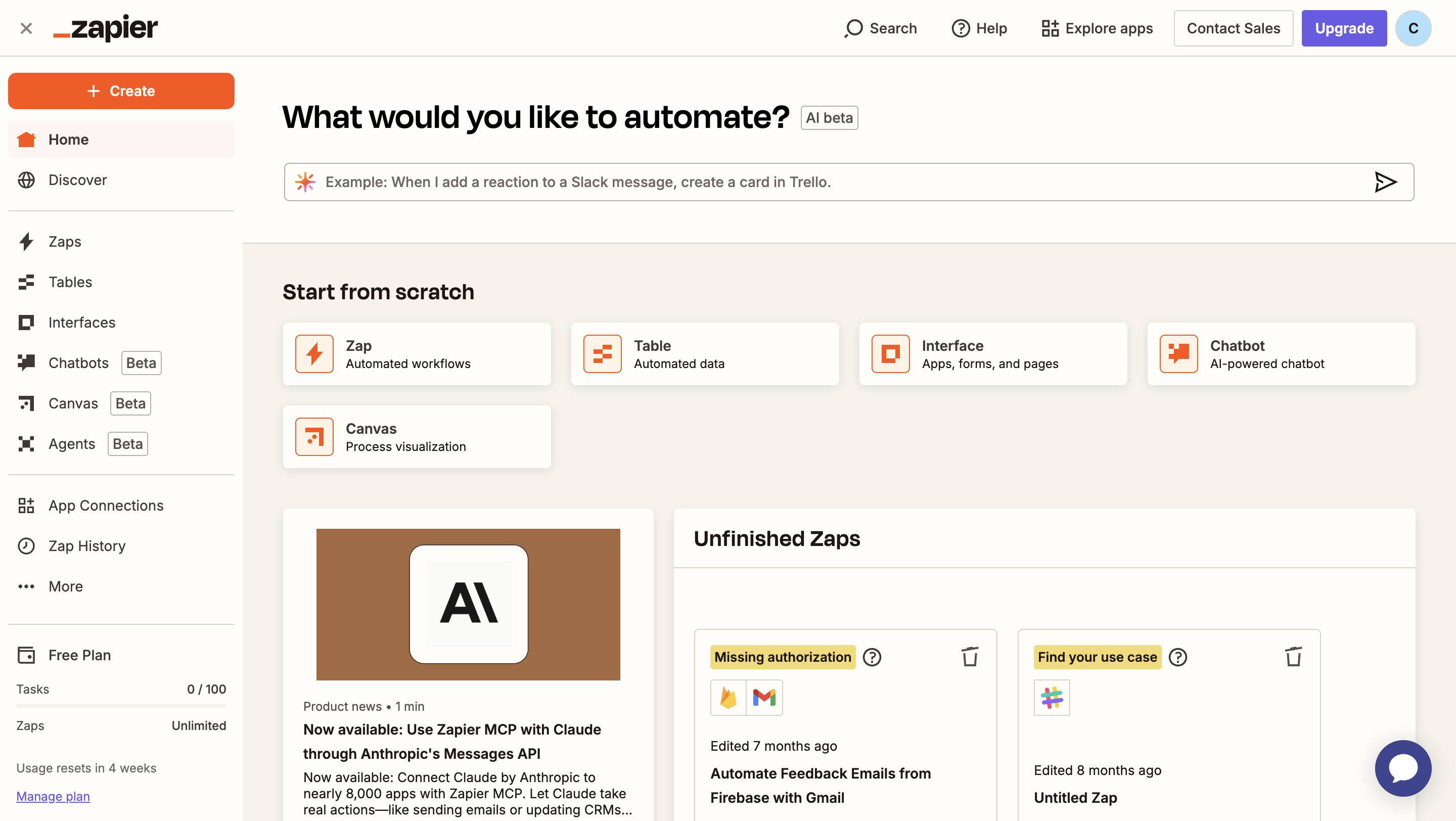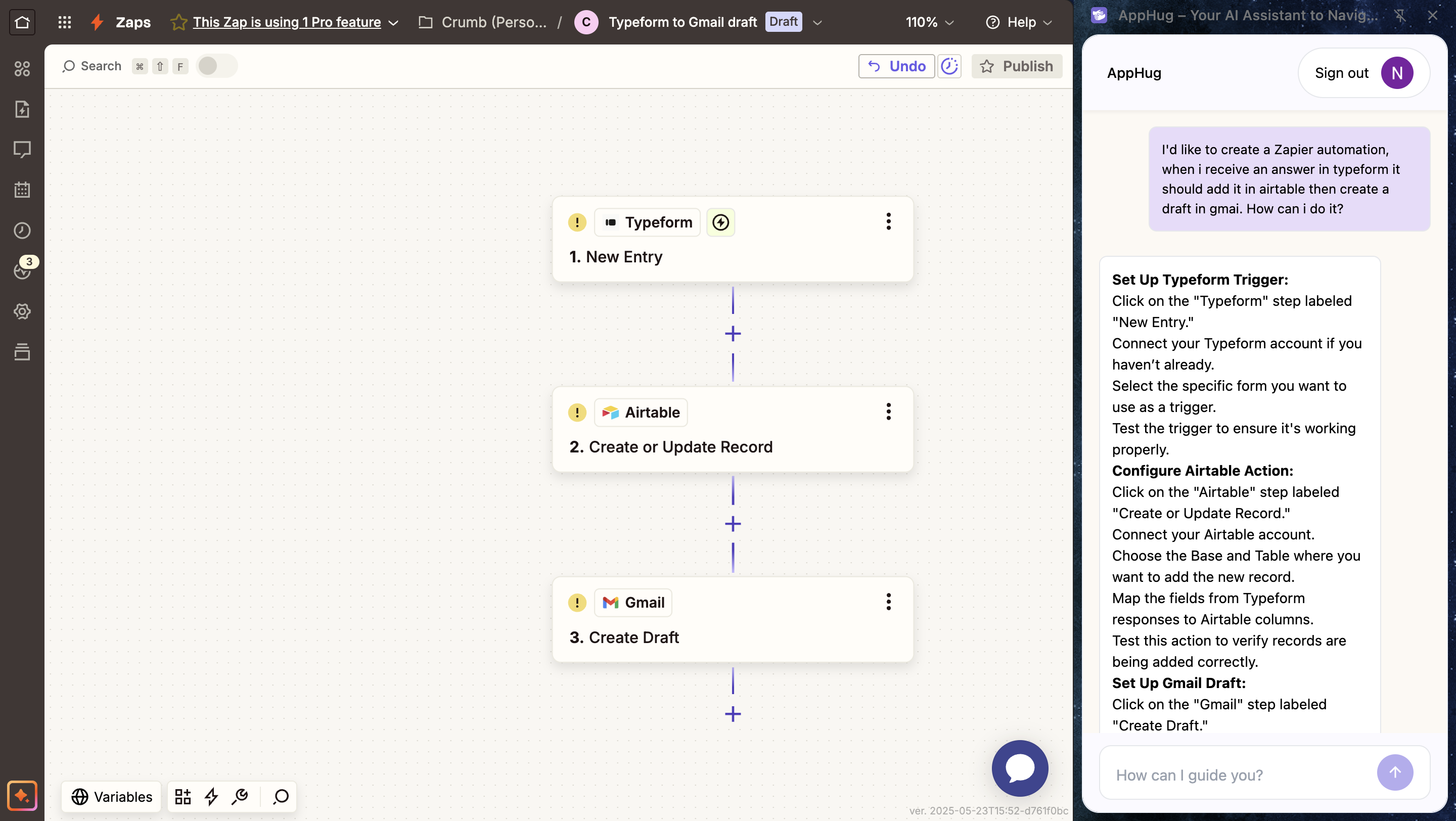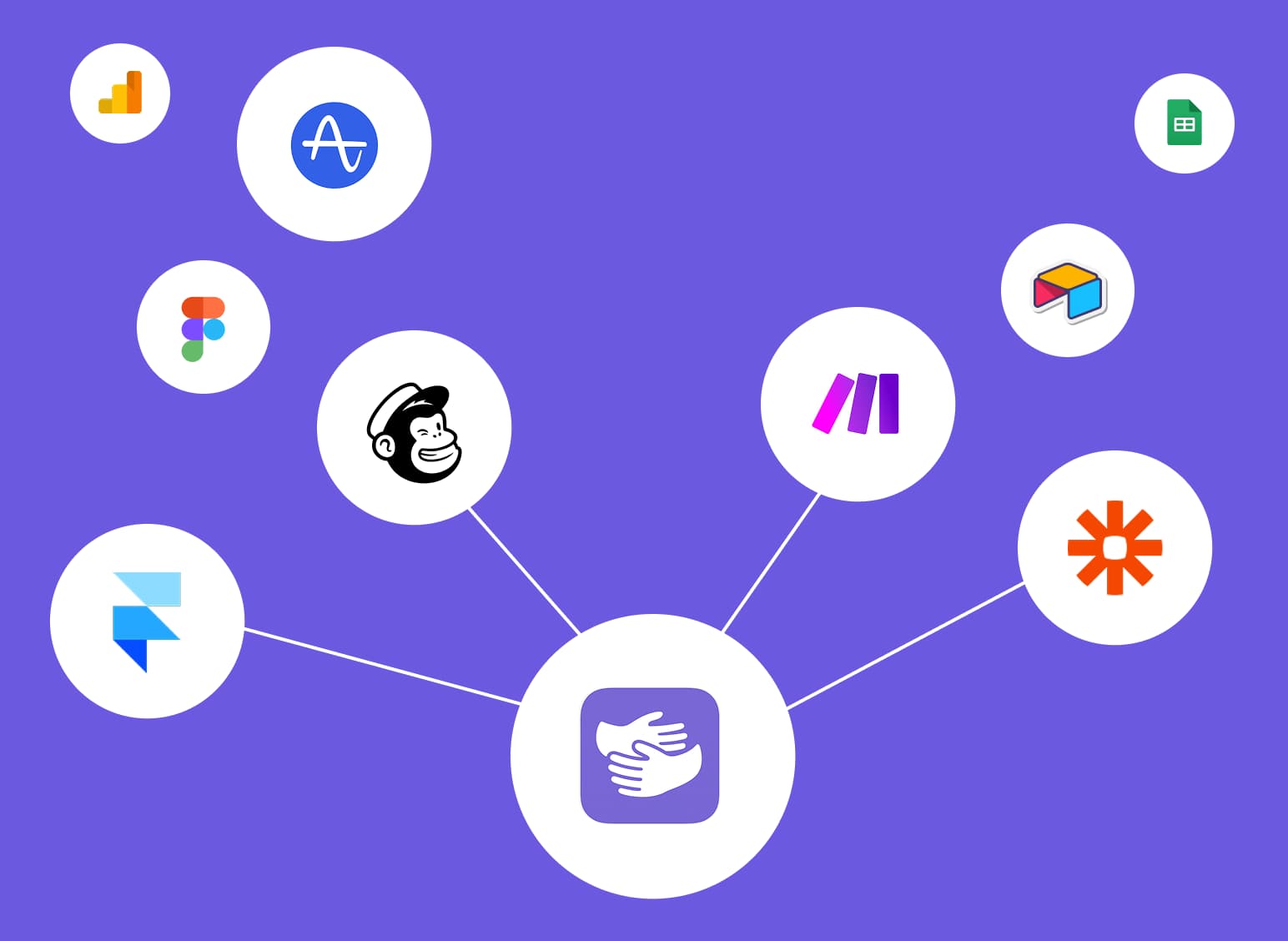What Is Zapier? A Simple Guide to How It Works

Stuck in Zapier?
AppHug gives you live guidance inside Zapier so you can do more, faster.
Try it for free↗Discover what is Zapier, what it's used for, and how to set up your first automation without writing a single line of code.
TL;DR
Zapier is a no-code automation tool that connects your apps and automates workflows. It uses 'Zaps' (trigger + action combinations) to eliminate manual tasks like copying data between tools. Perfect for solopreneurs, marketers, and small teams who want to automate without coding. The free plan includes 100 tasks/month, with paid plans starting at $19.99/month for more advanced features.
By the way, we're AppHug. We built a free personal AI assistant that helps you navigate complex tools.
If you often get stuck or need to learn new tools, check out AppHug. It gives you real-time, step-by-step help based on your screen, saving you time and frustration.
Zapier is a no-code automation tool that lets you connect your favorite apps like Gmail, Slack, Notion, and Google Sheets so they work together without manual effort. Think of it as a glue that ties different tools into one smooth workflow.
Instead of switching tabs and repeating the same tasks, you create a "Zap" once, and Zapier handles it for you automatically.
For example:
- A customer fills out a form → Their info is added to your Notion CRM
- You receive an email → The attachment is saved to Google Drive
- A payment is made on Stripe → A Slack alert is sent to your team
If you've ever thought, "Why am I still doing this manually?" Zapier is likely the answer.
What is Zapier used for?
So if you ever thought what is Zapier used for: It's used to automate tasks across tools that don't normally talk to each other. Zapier is ideal for:
- Solopreneurs who manage sales, operations, and marketing across 5+ tools
- Marketers who want to sync forms, CRMs, and email tools
- Small teams that need simple automations without hiring developers
Here's a Zap saving us hours every week:
Whenever someone submits a Typeform, their answers are automatically added to an Airtable database, and a follow-up email draft is created in Gmail.

This kind of Zap is perfect for:
- Lead management: Capture form responses and prep personalized follow-up emails instantly.
- Client onboarding: Automatically log new client info in your CRM and queue a welcome message.
- Internal task routing: Turn survey results or requests into actionable items for your team.
It's a simple workflow, but it saves hours every week—and removes the risk of forgetting to follow up manually.
Want to know how we created this Zap in less than 10 minutes?
If setting up Zapier feels overwhelming, try using a personal AI assistant like AppHug to guide you step-by-step.
AppHug is a Chrome extension that gives you contextual help directly inside tools like Zapier. Just describe your goal like "send Typeform responses to Airtable and create a Gmail draft" and AppHug reads your screen to walk you through the process in real time.
No more bouncing between help docs, YouTube videos, and forums. Just fast, in-the-flow guidance exactly when and where you need it.
Let's go deeper: How does Zapier work?
Zapier works by creating automated workflows called Zaps. Here's a quick guide to how it all fits together:
1. What is a Zap?
A Zap is a workflow made up of a Trigger and one or more Actions.
- Trigger: The event that starts the Zap (e.g., receiving a new email in Gmail)
- Action: What happens next (e.g., save the attachment to Dropbox)
You can enhance Zaps with:
- Filters – Run only under specific conditions
- Delays – Add time gaps between steps
- Paths – Branch your workflow with "if/then" logic
Once your Zap is live, it runs automatically in the background—no manual effort required.
2. What is a task in Zapier?
A task is any individual action your Zap performs. For example, if a single Zap saves an email to Google Drive and sends a Slack message, that counts as 2 tasks.
Why it matters? Zapier's pricing is based on how many tasks your account runs per month. Understanding this helps you choose the right plan and build more efficient workflows.
3. What is Zapier best for?
Zapier is best for:
- Replacing manual processes
- Connecting tools that don't integrate natively
- Saving time on repeatable tasks
You should use Zapier when:
- You spend too much time copying/pasting between apps
- You manage workflows across different teams or tools
- You want to scale operations without hiring
From your first Zap to advanced workflows
Start small. One Zap can already save hours a week. Later, you can:
- Combine Zaps
- Add logic branches
- Use AI tools (like OpenAI) in your workflows
Want a deeper walkthrough? Check out our full guide on how to use Zapier for more advanced ai automation techniques.
Is Zapier free?
Yes, Zapier has a free plan that includes:
- 100 tasks per month
- Access to core features
- Use of most popular apps
Need more? Paid plans start around $19.99/month and offer advanced features like:
- Multi-step Zaps
- Premium app integrations
- Higher task limits
Final thoughts
Zapier is the easiest way to start automating without writing code. Whether you're automating a side hustle, a small business, or a team workflow, it's flexible enough to fit into almost any tech stack.
Stuck in Zapier?
AppHug gives you live guidance inside Zapier so you can do more, faster.
Try it for free↗